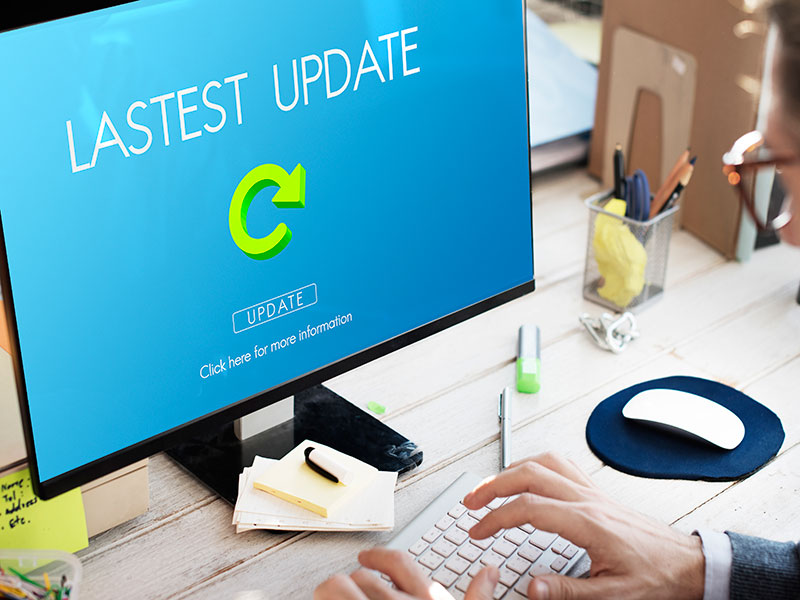Introduction
As a digital marketer, staying ahead of the curve is essential for success. One of the key elements in the ever-evolving landscape of online marketing is Google’s core updates.
These updates are crucial to understand as they can significantly impact search rankings and website traffic. In this comprehensive post, I will delve into the November 2023 Google Core Update, providing you with valuable insights and strategies to adapt and thrive in the wake of these changes.
Understanding Google Core Updates
Google’s core updates are designed to improve the search experience for users by refining the way search results are ranked and displayed.
The November 2023 update is no exception and is expected to bring about significant changes to the way websites are evaluated and ranked in search results.
It is important to understand that these updates are not targeted at specific websites or industries, but rather aim to enhance the overall quality of search results.
Staying informed and proactive is crucial in staying ahead and adapting to the changes brought about by the Google Core Updates.
By gaining a deep understanding of the update’s objectives and implications, marketers can effectively strategize and optimize their digital assets to align with the new search landscape.
How Google Search Works
To grasp the impact of a Google Core Update, it is imperative to have a fundamental understanding of how Google search works.
Google’s search algorithm is a complex system that analyzes and evaluates web pages with the goal of delivering the most relevant and valuable results to searchers.
The process involves crawling and indexing trillions of web pages,
With each core update, Google introduces changes to its algorithm, which can have a profound impact on website rankings. Marketers need to stay abreast of these algorithm changes and understand how they can affect their digital marketing strategies.
The Best Sources for Keeping Up with Google Algorithm Changes
To keep up with Google’s algorithm updates, marketing professionals should utilize reputable sources for the latest industry insights. The following sources are recommended:
-
- Google Search Central Blog: This official blog provides direct updates from Google regarding algorithm changes, best practices, and recommendations for website optimization
- Search Engine Land and Search Engine Journal: These industry-leading publications offer in-depth analysis, expert opinions, and news coverage on search engine algorithms and updates.
- Moz: This platform provides comprehensive SEO resources, including algorithm change histories, research studies, and tools for monitoring and adapting to search algorithm updates.
- Webmaster forums and communities: Participating in SEO-focused online communities and forums such as Reddit’s r/SEO and WebmasterWorld can provide valuable insights and discussions on algorithm updates and their implications.
By staying informed through these sources, SEO professionals can proactively adapt their strategies to align with Google’s algorithm updates and maintain strong search visibility.
Dealing With the Impact of the Update
The November 2023 Google Core Update is poised to bring about significant changes in search results.
Websites may experience fluctuations in their rankings as the update rolls out and the algorithm recalibrates.
It is imperative for marketers to closely monitor their sites as these changes are rolled out and assess their impact on traffic and
performance. This update is expected to be completed by the end of November 2023. A good way to begin the process would be to perform a comprehensive site analytics audit, followed by the creation of an SEO benchmark report.
With an analytics audit you can hone in on areas of your site and content that need the most attention and the SEO benchmark report will help you measure the impact of your efforts.
Using this strategy will help you find the most impactful post-update strategies quickly, which can give you a competitive advantage after a core update that significantly changes the search landscape.
The Role of Content Marketing
In the digital landscape, content marketing is a crucial component of successful SEO strategies, especially in light of the November 2023 Google Core Update.
This Google algorithm update underscores the importance of high-quality, relevant, and valuable content that aligns with Google’s E-A-T (Expertise, Authoritativeness, Trustworthiness) framework.
The November update emphasizes the need for authoritative and compelling content that meets the needs of the target audience.
By integrating E-A-T principles marketers can bolster their website’s relevance and authority, leading to improved search rankings and user engagement.
If your site took a hit, review your content for E-A-T compliance.
How Keyword Research is Changing
Keyword research has long been a cornerstone of SEO and content optimization.
However, the November 2023 Google Core Update is expected to refine the way keywords are evaluated and prioritized in search rankings.
Marketers and SEOs need to adapt their keyword research
strategies to align with the changing search landscape and user behavior. In the aftermath of the Google Core Update, it’s imperative for marketers to shift their focus toward comprehending user intent and creating content that naturally and informatively fulfills search queries.
The emphasis has transitioned away from traditional keyword strategies, such as wordsmithing, to a keyword theme model.
The approach now is to create keyword themes of converting phrases that utilize semantic variations, long-tails, natural speak, and contextually pertinent terms to enhance content for better search visibility and user engagement.
If large cohorts of your visitors are using voice search, then optimizing in a manner that matches how people speak, is also important.
Using Virtual Content Silos
Virtual Content silos that support keyword themes are a powerful way to organize and structure website content for optimal search engine visibility post-update.
By creating keyword-related content around conversion-oriented keyword themes, marketers can create a clear and focused topical relevance that signals to search engines the depth and breadth of their expertise in particular areas.
This approach not only enhances the overall user experience by making it easier for visitors to find relevant information but also sends strong signals to search engines about the site’s authority on specific topics, ultimately boosting the likelihood of rich results and improved search presence.
Website Mobile-Friendly Design
Mobile-friendliness has been a key ranking factor for Google, and the November 2023 Core Update is likely to further emphasize the importance of providing a seamless mobile experience.
Websites that are optimized for mobile devices are poised to benefit from improved search visibility and user satisfaction.
In light of the November Google Core Update, marketers must
ensure that their websites are not only mobile-friendly but also offer a fast and intuitive mobile browsing experience. In many cases, due to how people use mobile websites compared to desktop websites, a separate mobile experience, post-update, will be needed.
By prioritizing mobile optimization, marketers can capitalize on the growing trend of mobile search and position their websites for success in the updated search landscape.
Link Building Strategies Post-Update
Link building remains a crucial component of SEO, and its significance is expected to persist in the aftermath of the November 2023 Google Core Update.
However, the update may bring about changes in the way backlinks are evaluated and valued by the search algorithm now that AI has entered the arena, necessitating a shift in the strategic approach to link building.
The advancement of AI will revolutionize the way links are evaluated by Google’s algorithm in several ways.
Firstly, AI will enable more sophisticated analysis of the context and relevance of linked content, allowing Google to better understand the relationship between different pages and their significance.
This will lead to more accurate and nuanced evaluations of internal linking structures, helping to improve user experience and search engine optimization.
Additionally, AI will empower Google to detect and penalize manipulative link-building tactics more effectively, ensuring fairer and more trustworthy search results.
Furthermore, AI-driven algorithms can dynamically adapt to evolving web content and user behavior, leading to more agile and responsive link evaluations that reflect real-time trends and preferences.
Overall, AI will play a pivotal role in enhancing the accuracy, fairness, and effectiveness of link evaluations within Google’s algorithm.
Marketers should focus on acquiring high-quality, relevant backlinks from authoritative sources to bolster their website’s credibility and trustworthiness.
Additionally, diversifying link acquisition strategies and prioritizing natural link growth will be instrumental in navigating the evolving terrain of link building post the Google Core Update.
Unpacking Core Vitals Post-Update
Core Web Vitals have emerged as key metrics for evaluating the overall user experience provided by a website.
With the November 2023 Google Core Update, these vitals are expected to carry even greater weight in search rankings.
Marketers must prioritize optimizing their website’s performance in alignment with Core Web Vitals to enhance user satisfaction
and search visibility. By focusing on aspects such as page loading speed, interactivity, and visual stability, marketers can ensure that their websites deliver exceptional user experiences, thereby positively impacting search rankings and organic traffic.
Prioritizing the optimization of Core Web Vitals will be instrumental in adapting to the changes brought about by this Google Core Update.
Structured Data Post-Update
Structured data, in the form of schema markup, provides search engines with additional context and information about the content on a website.
With the November 2023 Google Core Update, the use of structured data is expected to play a more prominent role in influencing search rankings and enhancing the visibility of web pages.
Marketers should consider implementing structured data markup to provide search engines with a deeper understanding of their content, ultimately improving the likelihood of rich results and enhanced search presence.
Leveraging structured data effectively will be instrumental in maximizing the visibility and relevance of web pages in the wake of the November Google Core Update.
User Centricity & Popularity
The November 2023 Google Core Update underscores the critical importance of site usability and user experience in the ever-changing digital landscape.
With this update, Google aims to prioritize websites that offer exceptional user experiences, relevant and high-quality content, and seamless technical performance.
As a result, webmasters and digital marketers should focus on optimizing their websites for user-centricity, ensuring easy navigation, fast loading times, and engaging content.
Emphasizing site usability and user experience will not only align with the updated search criteria but also enhance the likelihood of improved search presence and visibility.
This update also underscores the importance of site popularity in ranking well on Google.
As a result, site popularity, measured by factors such as traffic, engagement, time-on-site, and backlinks, has become an even more crucial aspect of SEO success after this algorithm update.
Websites that effectively adapt to these changes by optimizing for user-centricity and popularity are poised to maximize their visibility following the Google Core Update.
Adapting to the November 2023 Google Core Update: Cheat Sheat
Adapting to the changes brought about by the November 2023 Google Core Update requires a proactive and strategic approach. Marketers can employ several tips and tricks to navigate the evolving search landscape and position their digital assets for success in the wake of the update.
-
- Regular Monitoring and Analysis: Marketers should closely monitor their website’s performance and search rankings following the update, leveraging analytics tools and benchmark reporting to gain insights into the impact of the changes and how to best adjust.
- Conversion rate optimization (CRO): The role of CRO in adapting to the November 2023 Google Core Update involves prioritizing user-centricity and popularity in relation to creating conversion momentum. A Heuristic CRO analysis can provide insights into user behavior and preferences, allowing for tailored website adjustments to meet evolving search criteria. The WiderFunnel LIFT framework can also be utilized to identify low-hanging fruit. Optimizing for user-centricity and popularity may prove to be the most impactful new tactic to employ post-update.
- Content Optimization: Optimize website content in accordance with Google’s E-A-T content framework, emphasizing relevance, quality, and user-centricity to meet the updated search criteria.
- Keyword Optimization: Focus on keyword themes and organize content into relevant silos that reinforce those themes.
- Technical SEO Enhancements: Implement technical SEO best practices to improve website performance, mobile-friendliness, and Core Web Vitals optimization.
- External Link Building: Refine your link-building strategies by focusing on the acquisition of high-quality, natural backlinks from authoritative sources. This involves identifying reputable websites within your industry or niche and establishing genuine, mutually beneficial relationships with their webmasters or content creators. By prioritizing backlinks from these sources, you can enhance your website’s credibility and visibility, ultimately contributing to improved search engine rankings and organic traffic growth.
- Internal Link Building: In light of Google’s most recent core update, internal linking has become increasingly vital for both site usability and search engine optimization. Strategically interlinking relevant content within a website not only enhances user experience by directing visitors to related topics but also signals to search engines the importance and relevance of specific pages. Consider how your content creation can also improve your site’s internal linking. This user-centric approach aligns with Google’s emphasis on delivering exceptional user experiences and prioritizing popularity, making it a vital tactic in adapting to the changes brought about by the November 2023 Google Core Update.
- User Experience Prioritization: In the wake of Google’s latest update, businesses must focus on enhancing user experiences to stay competitive in the digital landscape. To achieve this, companies should prioritize mobile optimization by ensuring that their websites are responsive and intuitive on various devices. Emphasizing user-centricity involves understanding and addressing the needs and preferences of the target audience, leading to tailored experiences. Additionally, fostering popularity through engaging content, social proof, and seamless navigation can further elevate the user experience, ultimately boosting brand loyalty and conversion rates.
Conclusion: Mastering the Changes of the Google Core Update
In conclusion, the November 2023 Google Core Update represents a significant milestone in the ever-evolving landscape of search and digital marketing. By understanding the intricacies of the update, leveraging strategic optimization tactics, and prioritizing user-centricity and site popularity, marketers can effectively adapt to the changes and position their websites for sustained success in the updated search environment.












